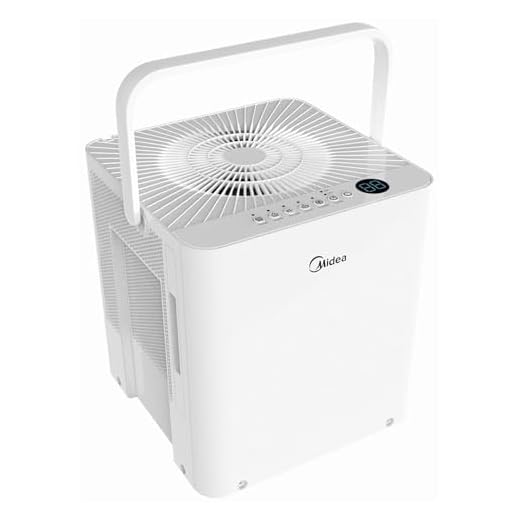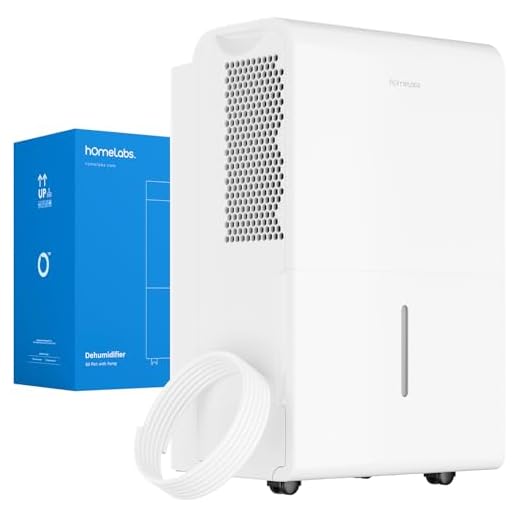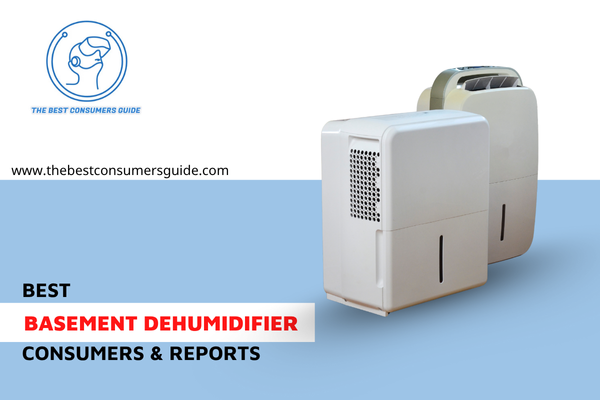If your basement smells musty, feels damp, or shows signs of mold, a dehumidifier could be the game-changer your home needs. Excess humidity isn’t just uncomfortable — it can damage walls, warp wood, ruin stored belongings, and even trigger allergies. A reliable basement dehumidifier works around the clock to pull moisture from the air, keeping your space dry, fresh, and healthy.
In this Best Basement Dehumidifier Review, we’ve hand-picked top-rated models based on performance, energy efficiency, durability, and user feedback. From compact units perfect for smaller spaces to heavy-duty machines built for large, wet basements, we break down the features, pros, and cons so you can choose the right one with confidence.
Why You Need a Basement Dehumidifier
Basements are naturally prone to humidity because they’re below ground level, often with poor ventilation. When humidity rises above 60%, it can cause:
- Mold and mildew growth
- Musty odors
- Damage to furniture, walls, and stored items
- Increased allergens and dust mites
- Potential structural weakening from excess moisture
The right dehumidifier can reduce humidity to safe levels (ideally 30–50%), protecting your health and property.
Top 5 Best Basement Dehumidifier Consumer Reports
Below is the list of top 5 Best Basement Dehumidifier that you can have a look at and buy. Check one by one carefully before purchasing.





*Note: Score is based on our AI score (Editor’s choice and rating)
Comparison Table — Top 1 to Top 5
| Rank | Model | Rated Capacity | Coverage / Key Features | What Users Like Most | Potential Drawbacks |
| #1 | Midea Cube 50-Pint | 50 pints/day | Up to 4,500 sq ft, app/Alexa, versions with built-in pump or gravity drain; extra-large tank via nested “cube”. | Very fast drying, efficient, less emptying thanks to large reservoir. | App setup can be fussy; typical fan hum. |
| #2 | Frigidaire FFAD5033W1 | 50 pints/day; ~19-pint tank | Energy Star, continuous drain, auto-defrost, top exhaust; pump variants available. | Reliable, easy controls, solid build; near-top drying speed. | Slightly smaller bucket vs. Cube; app-free unless buying smart variant. |
| #3 | hOmeLabs 50-Pint (Std. or Wi-Fi + Pump) | 50 pints/day | Up to 4,500 sq ft; 1.6-gal bucket on classic model; Wi-Fi version adds built-in pump and app. | Quiet for size, good value, simple to use; pump option eases draining. | Standard model needs gravity drain or frequent emptying. |
| #4 | Honeywell Smart (50–70 Pint class) | 50–70 pints/day | Alexa/Wi-Fi, basement-ready draining; multiple sizes and renewed options on Amazon. | Convenient remote control, brand credibility, steady performance. | Occasional app/humidistat nitpicks across reviews. |
| #5 | GE 50-Pint with Pump | 50 pints/day | Built-in pump + hose, ultra-quiet claims, auto/manual drainage; good for finished basements. | Hands-off draining, quiet profile reported by buyers. | Check hose routing and pump head height for your layout. |
Top 1 — Midea Cube 50-Pint (MAD50S1 Series): Fastest Drying + Largest Tank
Why it’s #1: In hands-on tests, the Midea Cube line has consistently ranked among the fastest at dropping relative humidity and among the most energy efficient per pint removed. Its nested “cube” design lets the bucket expand for a much larger water reservoir than typical 50-pint units, which means fewer trips to empty it. Real-world, that’s a big win in basements where the unit may run for long stretches.
Amazon availability & essentials: The 50-pint Cube covers up to 4,500 sq ft, supports app control/Alexa, and is offered in versions with built-in pump or gravity drain. If you can run a hose to a floor drain or sink, you’ll rarely touch the bucket.
User experience highlights: Owners frequently praise the “set-and-forget” convenience thanks to the big tank and reliable continuous drain. Some users note that Wi-Fi setup can be finicky, and like most compressor dehumidifiers, the Cube isn’t silent—but noise is generally described as a low fan hum appropriate for utility spaces. Independent testers also point to excellent build for the price.
Best for: Large, persistently damp basements where speed and low maintenance matter most.
Top 2 — Frigidaire FFAD5033W1: Proven, Efficient, and Easy to Live With
Why it’s #2: The Frigidaire FFAD5033W1 is a workhorse with a long track record. In comparative testing it typically finishes right behind the Cube for speed while staying energy-smart. Its top exhaust, washable filter, and straightforward controls make day-to-day use simple. Consumer Reports’ model page lists the claimed 50 pints/day and a tank size in the ~19-pint range (varies slightly by documentation), aligning with what we see in the field.
Amazon availability & essentials: You’ll find multiple FFAD5033W1 listings (with and without pump). Look for Energy Star, continuous drain, auto-defrost, bucket full alert, and a timer—all basement must-haves.
User experience highlights: Owners often mention reliable moisture pull, intuitive controls, and a sturdy chassis that tolerates long basement duty cycles. Independent reviews describe it as quiet-to-moderate (think box-fan level), and easy to service (filter, coils). If you’re choosing between Top 1 and Top 2, the Frigidaire is the no-nonsense, less fussy option.
Best for: Buyers who prioritize reliability, simple controls, and low-friction maintenance over app bells and whistles.
Top 3 — hOmeLabs 50-Pint (HME020031N / Wi-Fi variant): Quiet Value With Solid Support
Why it’s #3: The classic hOmeLabs 50-pint remains a value favorite for large rooms and basements, with good moisture removal, straightforward interface, and a reputation for quiet operation among big units. The brand now also sells a Wi-Fi 50-pint with built-in pump for those who want app control plus easy vertical lift to a sink.
Amazon availability & essentials: The standard 50-pint unit advertises coverage up to 4,500 sq ft with a 1.6-gallon bucket, while the Wi-Fi/pump version lists 50 pints/day at 80°F, 60% RH (the post-2019 DOE rating context), aligning with current labeling rules.
User experience highlights: Users like its “plug-it-in and it just works” reliability and lower noise than many competitors. On the flip side, the standard model may require more frequent bucket emptying unless you set up a drain hose; consider the Wi-Fi + pump if you can’t use gravity drain.
Best for: Shoppers seeking a quiet, good-value 50-pint with straightforward reliability—or a built-in-pump option without a premium brand price.
Top 4 — Honeywell TP70/Smart 50–70 Pint Class: Smart Controls + Established Brand
Why it’s #4: Honeywell’s basement-sized dehumidifiers pair Alexa-enabled smart control with basement-friendly draining and a durable cabinet from a big HVAC brand. If you want app control and voice commands to tweak setpoints without trekking downstairs, this is a strong pick.
Amazon availability & essentials: Honeywell’s smart line spans capacities; look for the 50–70 pint class for basements. Check that your listing includes Wi-Fi and, if needed, built-in pump. Renewed units are also sold on Amazon (helpful for budget shoppers), but verify the warranty terms.
User experience highlights: Owners appreciate the app/Alexa convenience and steady moisture control. Critical reviews occasionally mention humidistat accuracy or app quirks—common gripes across many smart dehumidifiers—so calibrate expectations accordingly.
Best for: Tech-forward households that want remote control and brand-name support in a large-capacity unit.
Top 5 — GE 50-Pint With Pump: Quiet Operation + Flexible Drainage
Why it’s #5: GE’s current Energy Star models are well-suited to basements, and the 50-pint with pump option adds the ability to push water up to a sink when gravity drain isn’t possible. The brand highlights ultra-quiet operation and auto/manual drainage, making it versatile for finished basements that double as living space.
Amazon availability & essentials: Look for 50-pint daily output, drain hose included, and the pump note in the title. There are also 35-pint variants (better for smaller spaces), but most basements benefit from the 50-pint class.
User experience highlights: Users call out the “set-and-forget” nature once the pump is configured and note low noise for a compressor unit. As with most dehumidifiers, filter cleaning and keeping air paths clear will maintain performance.
Best for: Basements without a floor drain where a built-in pump is the simplest path to unattended operation.
Real-World Buying Tips
- Capacity & coverage: For basements, 50-pint class models are the most versatile. Match to square footage and wetness level.
- Drainage plan: If you can run a gravity hose to a floor drain, do it. Otherwise, choose a built-in pump model or plan on emptying the bucket frequently.
- Energy matters: Look for Energy Star and models shown to remove moisture quickly—faster units spend less time running to hit your setpoint.
- Noise & placement: Expect fan-like noise; place units away from bedrooms and keep at least 6–12 inches of clearance around intakes/exhaust.
- Cold-space features: Auto-defrost protects coils in cool basements; most units listed include it.
Which One Should You Buy?
- Choose Midea Cube if you want the fastest drying, lowest hassle emptying, and a modern design that genuinely reduces maintenance. It’s the performance king in this group.
- Pick Frigidaire FFAD5033W1 for a rock-solid, proven basement solution with excellent performance and easy upkeep—ideal if you prefer simple, reliable controls over apps.
- Go hOmeLabs 50-pint if quiet operation and value pricing are your priorities. Consider the Wi-Fi + pump version when gravity drain isn’t feasible.
- Pick Honeywell Smart if you want Alexa control and a familiar HVAC name in your utility room.
- Choose GE 50-pint with pump for finished basements where you need uphill draining to a sink and want a quiet, set-and-forget setup.
Pro Setup & Care (Basement-Specific)
- Plan your drain first. If a floor drain is available, gravity hose is the lowest-maintenance option. If not, buy a built-in pump model and route to a utility sink.
- Seal the envelope. Close windows, limit infiltration, and run the unit continuously at first; once RH holds between 30–50%, most units will cycle to maintain setpoint.
- Mind the cold. Basements can be cool; make sure your dehumidifier supports auto-defrost and keep clear airflow around coils.
- Maintain monthly. Wash the filter, vacuum grilles, check the hose/pump, and clear the bucket sensor area to avoid false “full” alerts (applies to all models listed).
FAQ
What size should I get for a 1,000–1,500 sq ft basement?
Most homeowners choose a 50-pint class unit for basements because it balances capacity, speed, and price. If your basement is extremely wet (standing water after storms), fix infiltration first, then size up or run multiple units.
Are smart features worth it?
If your dehumidifier runs in a remote area, app/Alexa control makes it easier to monitor RH, tweak setpoints, and get alerts. If you prefer simplicity, Frigidaire FFAD5033W1 is excellent without Wi-Fi.
Bucket vs. continuous drain vs. pump?
For basements, continuous drain or built-in pump is ideal. Buckets fill fast during humid spells; the Midea Cube’s larger reservoir helps, but a hose or pump still wins for convenience.
Final Word
For most basements in 2025, the Midea Cube 50-pint is the best overall blend of speed, efficiency, and low-touch maintenance. The Frigidaire FFAD5033W1 is a superb, proven alternative if you want straightforward, durable operation without smart extras. Value-minded buyers who want quiet should start with hOmeLabs, while Honeywell and GE with pump serve homes that value smart control and drain flexibility. Cross-check your square footage, plan your drainage, and you’ll enjoy a drier, healthier basement within days.
I’m Georgie Barton, a reviewer for various magazines . I’ve been testing and writing about household products and electronics for years, and have become quite the authority on the subject. My goal is to help people make informed decisions when purchasing these items, so they can get the most value for their money.
My hope is that through my work, everyone will be able to find a quality and satisfactory product. Thank you for reading!

